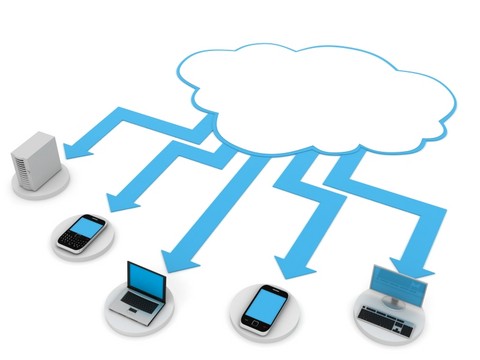The concept of a cloud as it applies to the information technology field has actually been around for many decades. For most users, the cloud is primarily known as a storage technology and not much else. More recently, the cloud has taken on more of a nebulous and abstract connotation. Today, the cloud has come to be known for the “X” as a service wherein “X” can mean multiple things such as software as a service, platform as a service, desktop as a service, network as a service, etc. Compare how the cloud is today with the earlier role of the cloud in the 1950s through the 1970s. Back then, the cloud was typically a single very large server which was housed separately from its’ users. The users would utilize a Wyse terminal or dumb terminal and view text on a green screen remotely.
Over time, the basic cloud idea gave way to having more localized computing power where you could work both online and offline. Three decades ago, being “online” actually meant having to dial up to a known or predestined computer bulletin board at very slow data rates such as 78 bits per second up to 300 bits per second. Contrast this with connectivity and speed today and it’s almost impossible to imagine a time when the Internet didn’t exist for the masses or was in its infancy.
Many software applications today reside in the “cloud.” What this means for the user is that you could add many mobile or computing devices and install a standard set of software or software configuration for all of you equipment regardless of where they are physically located.
One such software application is maintenance management software. This type of software can be regarded as a suite of specialty software applications similarly to Microsoft Office. Typically, a software suite might include asset management, work order capability, invoicing, maintenance scheduling, parts inventories, and documentation, just to name a few. The software suite serves as a cohesive collection of business applications required to automate and organize the daily operations for increased efficiencies and productivity.
Some of the benefits for choosing a cloud-based maintenance management software suite or application include a small investment or low total cost of ownership, technical support and customer service, minimal cost of software licensing, reduced equipment down time, software security and patch updates, mobility, and no need to increase your information technology staff for support. There is also a slight learning curve as with any new technology but training is an investment nonetheless. Software based in the cloud is much more beneficial than individual software copies installed on your computers.
Identifying and implementation of a cloud-based solution does not come without some risk; however, the benefits of the system will usually outweigh the risks. Just like the many software applications we use and which are available for computers and mobile devices, an organization must identify their requirements and objectively focus on the capabilities of cloud-based maintenance management software.
